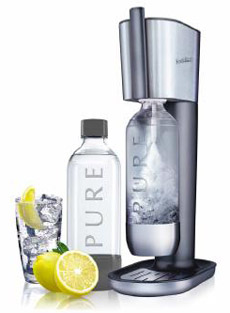
The problem with that process though, is that it would be very tedious to carry out, since you are dealing with very dilute solutions (solubility of Na2SO4 is only 47.6 g/L @ 0 deg. C) in order to isolate just a little K2CO4. A large initial amount of water would be needed just to get the reactants dissolved. I just don't see how this would be more effecient then what I had proposed.
By using a similar process, substituting KCl for K2SO4, and utilizing heat and evaporation to acheive a fractional crystallization of NaCl (instead of freezing/cooling), better yields of K2CO3 may be had, owing to the fact that the concentration of salts in a water solution will generally be greater at warm/hot temperatures. Also, the degree of difference between the solubilities of Na2CO3, K2CO3, NaCl, and KCl seem more favorable for separation, in comparison to the first scheme which utilizes K2SO4.
*
I also wanted to add that, although it might be difficult to test for sodium impurities in the final K2CO3 product, maybe by first neutralizing the K2CO3 solution with acetic acid, and then precipitating any residual Cl- ions that might be present, by adding lead acetate solution until no more precipitate forms, filtering and weighing it, could give at best a rough determination of how effective the selective fractional crystallization is, in getting mainly the NaCl out of the solution.
[Edited on 20-3-2012 by chemicalmixer]

